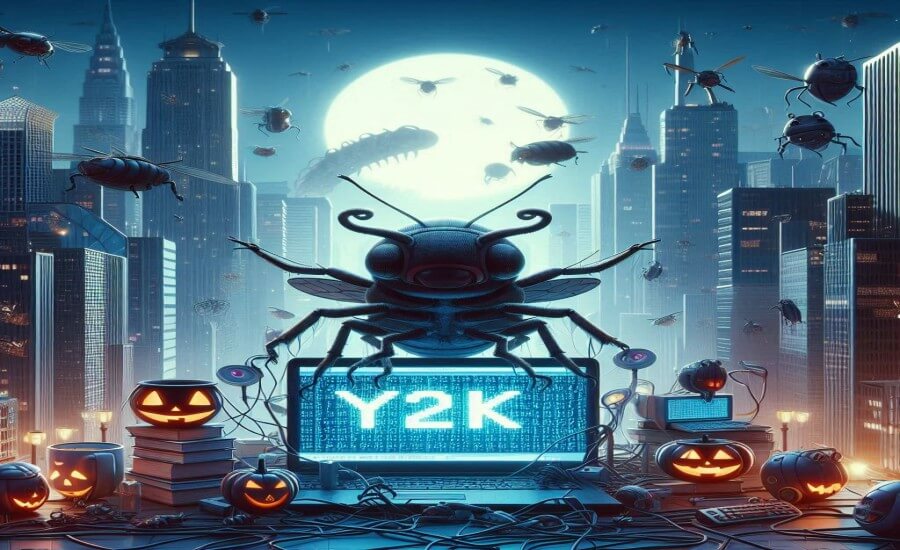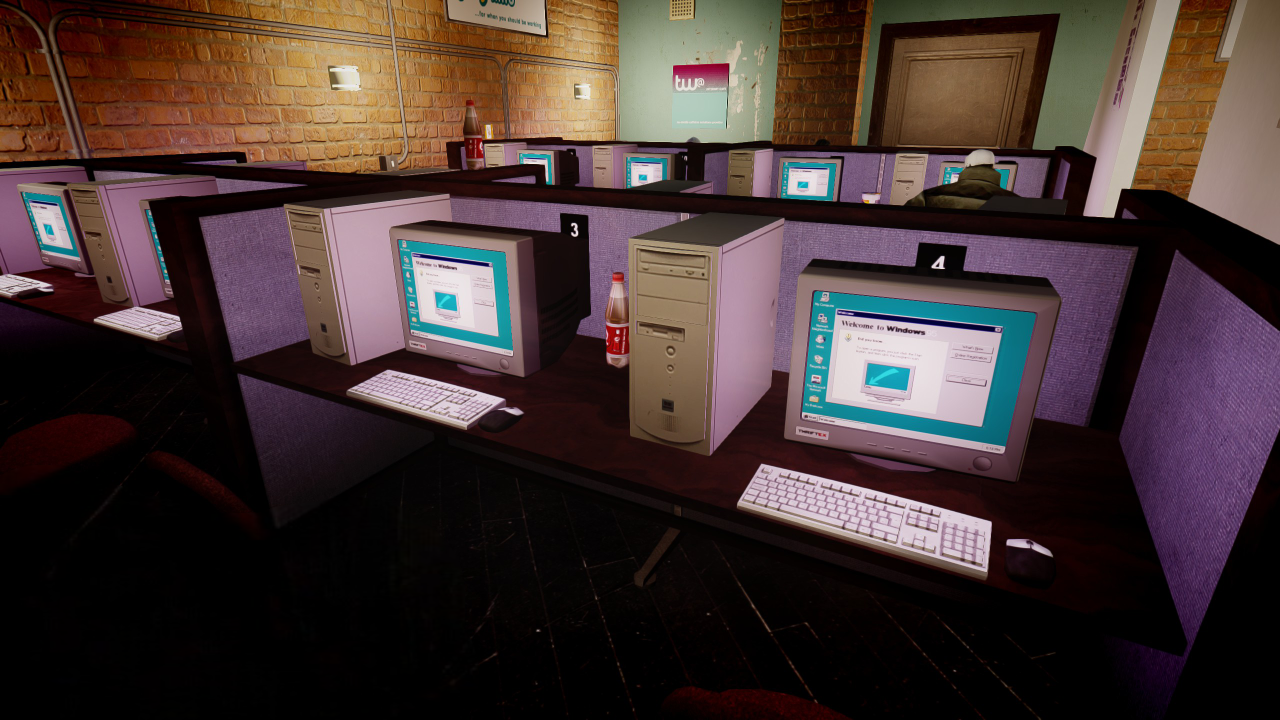Picture yourself in the mid-to-late 1990s. The World Wide Web is blossoming, beckoning with promises of online shopping, auctions on a nascent site called eBay, and global information access. You find a book on an early e-commerce site or win that coveted item in an online auction. Now comes the hard part: paying. Do you nervously type your credit card number into a form on a website that probably doesn't even have that little padlock icon yet? Or do you print out an order form, write a check or get a money order, put it in the mail, and wait weeks for your item to maybe arrive? For many, especially here in India where international credit cards were scarce and trust in online transactions was minimal, Cash on Delivery was the default for domestic goods, but offered no solution for online services or overseas purchases. The digital marketplace was exciting, but the friction of actually paying was immense. There had to be a better way. This challenge ignited a flurry of innovation, creating a forgotten generation of online payment pioneers who dreamed of digital cash long before PayPal became a verb.
The Visionaries (Late 80s - Mid 90s): "Early Attempts at Digital Cash"

In the early days of the web, security and privacy were paramount concerns. Sending credit card details over the nascent internet felt risky, and the desire for anonymous, cash-like digital transactions was strong among cypherpunks and early adopters. Two key players emerged with vastly different approaches to solving this.
Pioneer Spotlight: DigiCash & eCash (Founded 1989, launched ~1994)
-
What it was: One of the earliest and most technologically sophisticated attempts at creating true anonymous, electronic cash.
-
Who made it: Founded by renowned cryptographer Dr. David Chaum, based on his groundbreaking academic work on "blind signatures."
-
Why it mattered: DigiCash's eCash system used innovative cryptography to allow users to withdraw digital tokens from their bank, spend them online anonymously (the merchant couldn't link the payment back to the withdrawal), and have the merchant redeem them, all while preventing double-spending. It was a visionary system focused on user privacy and security, a true precursor to modern cryptocurrency concepts. It secured pilot programs with major banks like Mark Twain Bank (USA), Deutsche Bank (Germany), and Credit Suisse (Switzerland).
-
Why it faded: Despite its technical brilliance, eCash struggled with the classic "chicken and egg" problem: it needed widespread merchant adoption to attract users, and users to attract merchants. The system was perhaps too complex for average users and banks of the era. Chaum's reported reluctance to partner aggressively and prioritize practicality over cryptographic perfection also hampered growth. DigiCash filed for bankruptcy in 1998.
-
Legacy: A landmark in cryptographic payment systems. David Chaum is considered a father of digital cash and anonymous payment protocols. Its failure provides lessons about market timing and user adoption for technically advanced systems.
Pioneer Spotlight: First Virtual Holdings (FVHI) (1994)
-
What it was: An early online payment system focused on security by avoiding the transmission of credit card numbers over the internet during purchase.
-
Who made it: Founded by First Virtual Holdings, Inc. in San Diego.
-
Why it mattered: FVHI tackled security differently. Users registered their credit card with FVHI offline and received a unique ID number (VirtualPIN). To buy online, the user sent only the VirtualPIN to the merchant. The merchant then forwarded the PIN and transaction amount to FVHI. FVHI then emailed the user asking for confirmation (a simple 'yes' or 'no' reply). Only after receiving the 'yes' reply would FVHI charge the user's stored credit card and pay the merchant (via ACH). This multi-step, email-based process provided security against intercepted card numbers but introduced significant friction and delay.
-
Why it faded: The inconvenience of the email confirmation step hampered usability. As SSL encryption became standard, making direct credit card transmission more secure, FVHI's core value proposition weakened. It faced strong competition and exited the payment business in 1998, its assets largely going to rival CyberCash.
-
Legacy: Demonstrated an early, albeit cumbersome, approach to secure online payments focused on keeping sensitive data off the network during the transaction itself.
Parallel Developments (Late 80s - Mid 90s)
-
World Wide Web protocols established. Early graphical browsers (Mosaic) appear.
-
E-commerce begins tentatively (Amazon founded 1994, eBay founded 1995).
-
Concerns about online security and privacy are high. SSL encryption starts to be developed and deployed.
User Experience Snapshot
Imagine installing special eCash wallet software, withdrawing "CyberBucks" from a participating bank (a rarity!), and trying to find merchants who accepted this anonymous currency. Or making a purchase with First Virtual, then waiting for an email, logging into your email client (maybe via slow dial-up), finding the confirmation message, and replying 'yes' before the transaction could even proceed. These systems were pioneering but far from the seamless click-to-pay we know today. For most users in India, these were distant concepts, unheard of amidst the local challenges of basic internet access.
Price Point Perspective
DigiCash aimed for micropayments, potentially involving tiny transaction fees. First Virtual likely charged merchants processing fees. The main "cost" for users was the complexity and limited acceptance.
The Infrastructure Builders (Mid-1990s): "Wallets, Cards & Micropennies"

While visionaries dreamed of replacing cash, other pioneers focused on making existing payment methods (like credit cards) work more securely online, or tackling the specific challenge of very small online payments.
Pioneer Spotlight: CyberCash (1994)
-
What it was: A comprehensive system designed to facilitate secure online payments, primarily focusing on credit card transactions, but also offering a micropayment solution.
-
Who made it: Co-founded by internet pioneers including Dan Lynch, Bill Melton, and Steve Crocker.
-
Why it mattered: CyberCash offered merchants software (CyberRegister) to securely accept payments and consumers a "digital wallet" (CyberWallet) to store their encrypted payment information. Transactions were routed through CyberCash's secure gateway servers, which acted as intermediaries with the traditional banking system. They also developed CyberCoin for micropayments, attempting to make small online purchases viable. CyberCash partnered with numerous banks and aimed to be an integrated part of the online payment infrastructure. It went public in 1996.
-
Why it faded: Despite significant funding and partnerships, CyberCash faced challenges. Users found the wallet software installation and usage cumbersome. Merchant integration could be complex. Security breaches (though sometimes disputed by the company) damaged trust. The rise of simpler integrated checkout solutions and the dot-com crash ultimately led to its Chapter 11 bankruptcy in 2001. VeriSign acquired most assets (which PayPal later bought).
-
Legacy: A major early attempt at building secure, wallet-based online payment infrastructure integrated with banks. Its failure highlighted the importance of user experience and simplicity in online payments.
Pioneer Spotlight: Millicent (DEC, presented 1995)
-
What it was: A system specifically designed by Digital Equipment Corporation (DEC) to enable efficient micropayments – transactions worth tiny fractions of a cent up to a few dollars.
-
Who made it: Developed by researchers at DEC's Systems Research Center (later part of Compaq).
-
Why it mattered: Millicent tackled a key problem: traditional credit card fees made processing very small payments uneconomical. It used a system of "scrip" – digital tokens specific to each vendor, purchased by users from brokers in bulk. Transactions involved exchanging this lightweight scrip directly with the vendor, minimizing overhead. It was designed for paying for things like reading single articles, viewing images, or using tiny online services.
-
Why it faded: The micropayment economy envisioned in the mid-90s never truly materialized in the way Millicent expected. The complexity of managing different vendor scrips and the broker system created friction for users. Like many promising research projects, it didn't achieve widespread commercial adoption before DEC's acquisition and shifts in the market.
-
Legacy: A significant early exploration of micropayment protocols, addressing the technical challenges of very low-value transactions. Influenced later research, although the problem of viable, universal micropayments remains largely unsolved.
Parallel Developments (Mid-1990s)
-
SSL encryption becomes more common, improving baseline security for transmitting credit card data online.
-
E-commerce sites proliferate. Online advertising begins. The "pay-per-view" content model is explored.
User Experience Snapshot
Using CyberCash meant installing wallet software, entering your card details once, and then using the wallet to approve transactions – theoretically simpler and safer than re-entering card details everywhere, but often clunky in practice. Trying to use a system like Millicent would have involved buying specific "scrip" for different websites, adding a layer of complexity before making tiny purchases.
The Dot-Com Currencies (Late 1990s): "Beenz Meanz Bankrupt?"
As the dot-com bubble inflated in the late 1990s, a new breed of online "currency" emerged. These weren't primarily focused on secure payments or anonymity, but were intertwined with the hype, advertising revenue, and loyalty schemes of the era.
Pioneer Spotlight: Beenz.com (1998)
-
What it was: An online loyalty currency. Users "earned" beenz by performing actions desired by websites – clicking ads, registering, visiting sites, shopping online.
-
Who made it: Founded by Charles Cohen in the UK, expanded globally with significant VC funding (nearly $100M).
-
Why it mattered: Beenz represented a major attempt to create a universal online rewards currency. Users accumulated beenz in a central account and could spend them at participating online merchants. It gained significant partnerships and media attention, embodying the optimism (and hype) of the dot-com era.
-
Why it faded: The business model was fundamentally flawed. It relied on dot-coms having large marketing budgets to buy beenz to give away. When the bubble burst in 2000-2001, that revenue dried up. Beenz had little intrinsic value, and the exchange process was often confusing. The company was sold for a fraction of its investment to Carlson Marketing Group in 2001 and the currency vanished.
-
Legacy: A high-profile example of dot-com era ambition and flawed loyalty-based business models. A nostalgic memory for those who collected (and perhaps tried to spend) beenz.
Pioneer Spotlight: Flooz.com (1999)
-
What it was: Marketed as "the world's first online gift currency." Users purchased Flooz credits with real money, which could then be sent (primarily as gifts) to others via email. Recipients could spend their Flooz at participating online retailers.
-
Who made it: Founded by Robert Levitan (co-founder of iVillage). Famous for its extensive advertising campaign featuring actress Whoopi Goldberg.
-
Why it mattered: Flooz aimed to be the digital equivalent of a gift certificate, usable across multiple online stores. Its high-profile marketing campaign made it one of the most visible dot-com brands for a short period.
-
Why it faded: Like Beenz, its adoption by both merchants and users was limited. It suffered heavily when the dot-com bubble burst. Critically, it was also targeted by a Russian-Filipino crime syndicate who used stolen credit cards to buy large amounts of Flooz ($300,000 worth) as a money-laundering technique. This fraud, combined with the economic downturn, forced the company to shut down abruptly in August 2001, rendering all existing Flooz worthless.
-
Legacy: A cautionary tale of dot-com excess, unsustainable marketing spend, and the vulnerability of early online financial systems to fraud. Often cited alongside Beenz and Pets.com as symbols of the bubble's collapse.
Parallel Developments (Late 1990s)
-
The Dot-com bubble reaches its peak. Massive venture capital investment flows into internet startups. Online advertising becomes a major revenue source (temporarily). E-commerce continues rapid growth.
User Experience Snapshot
Remember seeing those Beenz ads or Whoopi Goldberg shilling for Flooz? Maybe you earned some Beenz clicking around websites or received Flooz as a gift. Trying to spend them, however, often involved finding the limited number of participating merchants who accepted the quirky online currencies. It felt more like a marketing gimmick than real money.
Price Point Perspective
Beenz were "earned." Flooz was bought with real money (e.g., $25 USD bought 25 Flooz credits). Their value proposition was questionable, and their sudden worthlessness upon collapse angered many users.
The PayPal Prelude & The Crash (Late 1990s - Early 2000s): "Simplicity Wins, Bubbles Burst"
While systems like DigiCash, CyberCash, Beenz, and Flooz wrestled with complexity, adoption, and volatile business models, a new player emerged with a simpler, more pragmatic approach. Confinity (focused on Palm Pilot payments) and X.com (Elon Musk's early financial services venture) merged in 2000 to become PayPal.
PayPal's genius lay in its simplicity and focus:
-
Used Existing Infrastructure: Leveraged email addresses as user identifiers and linked directly to users' existing bank accounts (via ACH) and credit cards. No complex wallets to install (initially), no new currency to understand.
-
Person-to-Person (P2P) Focus: Initially targeted easy money transfers between individuals – perfect for settling debts or paying for online auction winnings.
-
eBay Synergy: Became the preferred payment method on the booming eBay auction site, providing a crucial solution for buyers and sellers and driving viral growth.
While PayPal wasn't without its own early security challenges and controversies, its model proved far more resilient and user-friendly than many of its predecessors. Then came the Dot-Com Crash of 2000-2001. The speculative bubble burst, venture capital dried up, and online advertising revenue plummeted. This proved fatal for companies like Beenz, Flooz, and CyberCash, which relied heavily on the bubble economy or complex infrastructure rollouts. PayPal, with its strong foothold in the growing eBay marketplace and a more adaptable model, survived the crash and cemented its dominance, eventually being acquired by eBay in 2002.
Why They Are Footnotes: "Lessons from the Digital Wallet Graveyard"
The graveyard of pre-PayPal payment systems is full of ambitious ideas. Their failures stemmed from a confluence of factors:
-
Complexity: Many systems (DigiCash, CyberCash, First Virtual) required users and/or merchants to install special software, understand new concepts (digital cash, scrip), or follow multi-step processes, hindering adoption.
-
Usability: Clunky interfaces, difficult setup, and inconvenient verification methods (like FVHI's email loop) frustrated users.
-
Adoption Hurdles: The "chicken and egg" problem was critical. Without enough merchants accepting a system, users wouldn't adopt it, and vice versa.
-
Flawed Business Models: Systems like Beenz and Flooz were built on the shaky foundations of dot-com advertising budgets and hype, lacking sustainable value propositions.
-
Technology & Timing: Some, like DigiCash, were arguably too far ahead of their time, requiring infrastructure and user understanding that didn't yet exist. Others failed to adapt as security standards like SSL improved.
-
The Dot-Com Crash: The abrupt end of easy venture capital funding killed many startups that hadn't yet reached profitability or critical mass.
-
PayPal's Rise: PayPal offered a "good enough" solution that was simpler, leveraged existing user behaviors (email), and found a killer application (eBay payments), rapidly outmaneuvering more complex competitors.
-
Trust & Security: Early systems faced immense skepticism about online security. Any perceived or actual security failure (CyberCash hacks, Flooz fraud) was damaging.
For users in India during this period, most of these systems were largely irrelevant. The primary barriers were lack of internet access, low credit card penetration, and the dominance of Cash on Delivery for domestic e-commerce. The online payment revolution arrived later, leapfrogging many of these early Western pioneers.
Full Circle Reflections
Before the effortless tap-to-pay or one-click checkouts of today, sending money or buying goods online was a Wild West of experimentation. Visionaries like David Chaum dreamed of anonymous digital cash, companies like First Virtual and CyberCash wrestled with securing credit card transactions, while dot-com darlings like Beenz and Flooz offered fleeting digital currencies built on hype. These forgotten pioneers tackled the fundamental challenges of trust, security, usability, and value exchange in the nascent digital economy.
Most failed, succumbing to complexity, flawed models, the dot-com crash, or simply being outpaced by PayPal's pragmatic simplicity. Yet, their stories are not just cautionary tales. They laid the groundwork, tested concepts, and highlighted the pitfalls that shaped the development of the secure, convenient online payment systems we now rely on. They were the ambitious, often flawed, but necessary first drafts of our digital financial present. These ghosts in the machine remind us that today's seamless transactions were built on the lessons learned from yesterday's cash crashes.
The Heritage Impact: Paving the Digital Path
These forgotten pioneers left behind crucial legacies:
-
Conceptual Foundations: Introduced and tested ideas like digital cash, online wallets, secure transaction protocols, micropayments, and P2P transfers.
-
Security Awareness: Highlighted the critical importance of security and trust in online financial transactions, driving improvements in encryption and verification.
-
User Experience Lessons: Demonstrated that simplicity and ease of use were paramount for mass adoption, often trumping technical sophistication.
-
Market Validation: Proved the enormous demand for better ways to pay online, paving the way for successful successors.
-
Case Studies: Their failures provide invaluable lessons in business strategy, technology adoption, and navigating market bubbles.
They dared to build the infrastructure for digital commerce before the blueprints were fully drawn, and their efforts, successful or not, made today's online economy possible.
FAQ: Early Online Payments
-
What online payment systems existed before PayPal became dominant? Several significant players included DigiCash (with its anonymous eCash), First Virtual Holdings (using email verification), CyberCash (offering wallets and secure card processing), Millicent (focused on micropayments), and dot-com era currencies like Beenz and Flooz.
-
Who invented digital cash? Dr. David Chaum is considered a key pioneer. His work on cryptographic protocols and blind signatures in the 1980s led to the creation of DigiCash and its eCash system in 1990, one of the earliest attempts at truly anonymous, secure electronic cash.
-
Why did early systems like Beenz and Flooz fail so spectacularly? They were heavily tied to the dot-com bubble. Their business models relied on online advertising revenue and venture capital funding, which evaporated when the bubble burst (2000-2001). They also lacked broad merchant adoption and a compelling long-term value proposition beyond marketing gimmicks. Flooz also suffered from significant fraud.
-
How did PayPal succeed where many earlier systems failed? PayPal offered a simpler approach. It used existing email addresses as identifiers and easily linked to users' existing bank accounts and credit cards. Its initial focus on Person-to-Person (P2P) payments provided a clear use case, especially for the rapidly growing eBay auction market, which fueled its viral adoption. It survived the dot-com crash and benefited from the failures of its competitors.
Are any of these early online payment systems still around today? No, the specific companies and systems mentioned (DigiCash, First Virtual, CyberCash, Millicent, Beenz, Flooz) are all defunct. Their assets were often sold off, and the services were shut down, mostly around the dot-com crash era (1998-2001). However, the concepts they pioneered heavily influenced the development of PayPal and modern fintech solutions.





